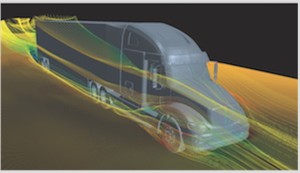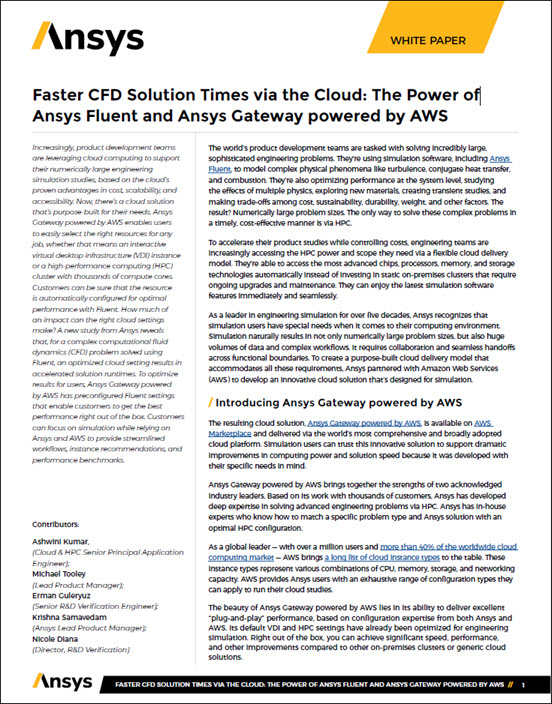 LLNL and the Rensselaer Polytechnic Institute will collaborate to expand use of HPC under a recently signed memorandum of understanding. Both Livermore and Rensselaer have built robust computational ecosystems equipped with the necessary resources to scale codes, including the hardware and infrastructure needed for testing and validation, infrastructure, tools for optimization and debugging, and the people harboring the expertise and experience required to program.
LLNL and the Rensselaer Polytechnic Institute will collaborate to expand use of HPC under a recently signed memorandum of understanding. Both Livermore and Rensselaer have built robust computational ecosystems equipped with the necessary resources to scale codes, including the hardware and infrastructure needed for testing and validation, infrastructure, tools for optimization and debugging, and the people harboring the expertise and experience required to program.
It’s well recognized that HPC is key to accelerating technological innovation and to fueling a nation’s economic vitality,” said Fred Streitz, director of LLNL’s High Performance Computing Innovation Center (HPCIC), which facilitates computational engagements with industry. “Our long, fruitful history of collaboration and joint scientific and technological discovery with RPI is a natural platform on which to build opportunities for companies to advance through the use of HPC.”
Livermore and Rensselaer will look to bridge the gap between the levels of computing conducted at their institutions and the typical levels found in industry. Scientific and engineering software applications capable of running on HPC platforms are a prime area of interest.
The lack of highly scalable codes, especially commercial ones, presents a real barrier for companies, as is the integration of such codes into existing business workflows,” said Chris Carothers, director of the Center for Computational Innovations (CCI), which is based on the Rensselaer campus and at the Rensselaer Technology Park (link is external) in Troy, New York. “Companies have built whole workflows around these applications, but they don’t scale to the platforms available now and they won’t scale to the newer generations of upcoming platforms. This leaves them locked in a position unable to capitalize on advanced R&D solutions that are there for the taking.”
To fulfill its national security missions, LLNL applies its HPC modeling and simulation capabilities to both engineering and scientific problems. “Livermore exists to solve complex problems and to deliver solutions for national security, a great many of which involve HPC,” Streitz said. “To that end, we’ve pushed through barriers along the way and established the methodologies, resources and knowledge required to deliver results.”
Rensselaer also applies HPC to the solution of practical engineering and design problems readily applicable to industry’s interest in improved product prototyping, development and validation. Through the federal Small Business Innovation Research program, Rensselaer has brought HPC capabilities to smaller companies.
The MOU will allow LLNL and Rensselaer to better support the National Strategic Computing Initiative (NSCI) announced by President Obama on July 29. The NSCI guiding principles ensure continued U.S. leadership in supercomputing that includes: fostering “public-private collaboration, relying on the respective strengths of government, industry and academia to maximize the benefits of HPC”; and “applying new HPC technologies broadly for economic competitiveness and scientific discovery,” according to the executive order issued by the president.
 The agreement also will help support the High Performance Computing for Manufacturing Program (HPC4Mfg) announced today by the U.S. Department of Energy. HPC4Mfg is led by Lawrence Livermore, Oak Ridge and Lawrence Berkeley national labs. HPC4Mfg couples U.S. manufacturers with the national laboratories’ world-class computational research and development expertise to address key manufacturing challenges.
The agreement also will help support the High Performance Computing for Manufacturing Program (HPC4Mfg) announced today by the U.S. Department of Energy. HPC4Mfg is led by Lawrence Livermore, Oak Ridge and Lawrence Berkeley national labs. HPC4Mfg couples U.S. manufacturers with the national laboratories’ world-class computational research and development expertise to address key manufacturing challenges.
We bring complementary strengths to this collaboration. Both Rensselaer and LLNL have a lot of experience developing new software applications as well as scaling up existing applications. We’re able to draw on the knowledge and work we’ve created and apply it toward advancing industry,” Carothers said.
Improved modeling and simulation capabilities can improve the quality and reduce the time required to develop and get products and services to market, giving companies a competitive advantage.
Rensselaer and LLNL have a successful history of reaching out to industry. LLNL makes HPC expertise across multiple disciplines and HPC resources available to industry through its High Performance Computing Innovation Center on a cost recovery basis. At Rensselaer, the Center for Computational Innovations has been reaching out to industry in strong collaboration with the Scientific Computing Research Center (SCOREC), led by Professor Mark Shephard, and the New York State High-Performance Computing Consortium (HPC^2), led by Vice President and Chief Information Officer John Kolb.
In line with President Obama’s recently announced strategic initiative, this agreement will allow us to better help companies take their computational capabilities to the next level and focus those HPC resources on finding practical solutions to their R&D challenges,” Carothers said. “We can provide R&D expertise in modeling and simulation, virtual prototyping and testing, advanced manufacturing and data analysis. By tapping this know-how, industry can develop a computational and competitive edge.”
Source: LLNL



